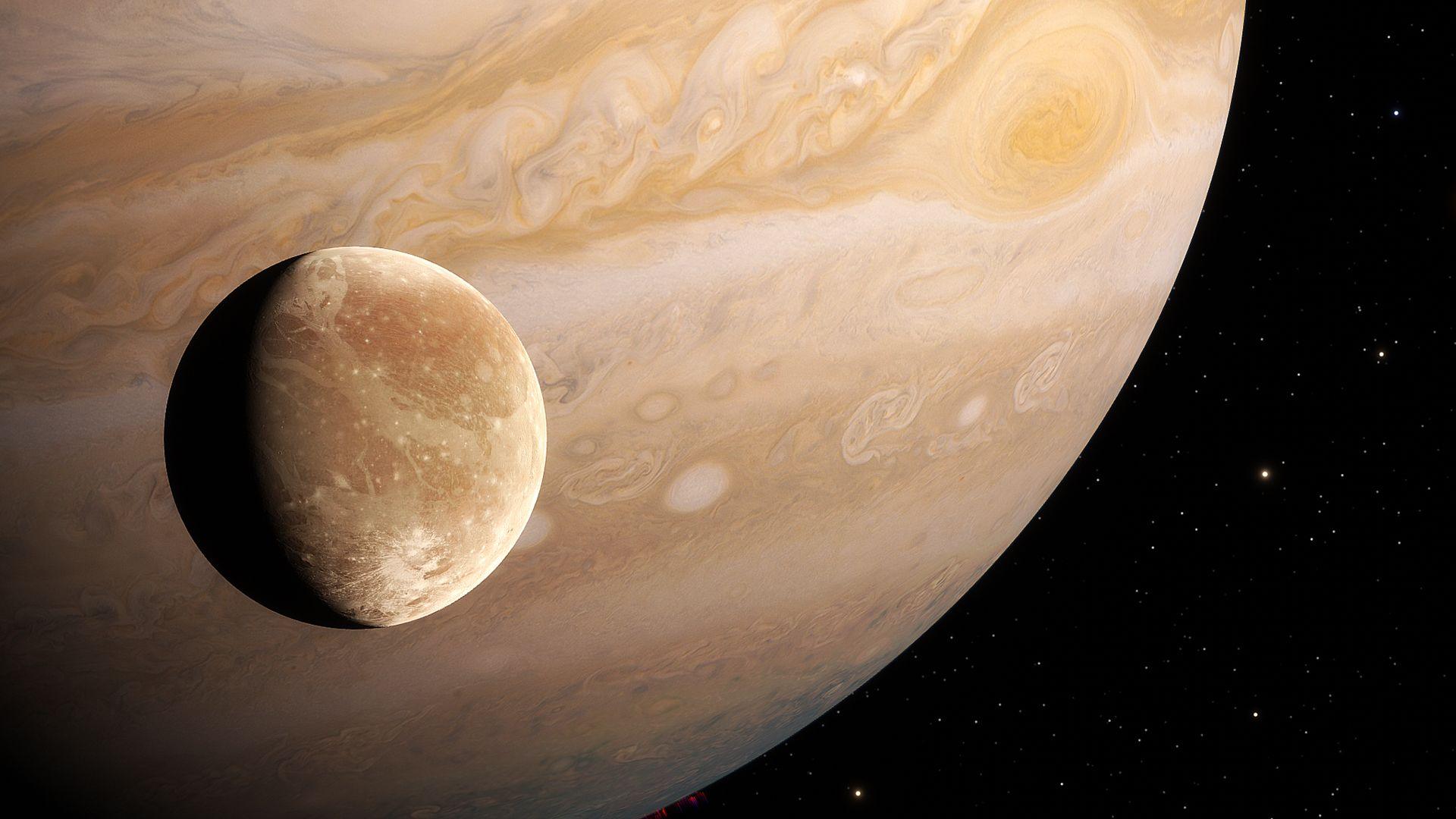Asteroid bigger than one that wiped out the dinosaurs hit Jupiter's moon scientists say

Like Earth, Ganymede was once hit by a giant asteroid - but it was much larger than the one that is commonly believed to have wiped out the dinosaurs
- Published
Sixty-six million years ago, the Earth was hit by a six mile-wide asteroid that had a big impact on the planet.
But new research has found that the solar system's largest moon felt the force of an even bigger asteroid - over 4 billion years ago.
A team of scientists at Kobe University, Japan, looked at the the trenches and holes on the surface of Ganymede, one of Jupiter's moons.
By running computer simulations of the leftover scars caused by the asteroid they worked out that its size was around 185 miles (300km) wide - almost the length of 6000 Olympic swimming pools!
More outer space stories:
- Published15 April 2023
- Published20 August
- Published30 August
Asteroids are big chunks of rock that can vary in size, which float throughout space and mostly in the main asteroid belt between Mars and Jupiter
Published in the journal Scientific Reports, the findings show that the force of the asteroid was so huge that it caused Ganymede to spin.
The asteroid pushed the moon so much that Ganymede turned around, with the crater now facing away from Jupiter.
Naoyuki Hirata and their team have been looking at Ganymede's furrow system for a while, but the new findings show just how big an impact the asteroid had on the moon.
It will be at least seven years until a space mission reaches Ganymede to put Naoyuki's findings to the test up close
It's hoped that more evidence may come when the European Space Agency's Juice spacecraft, which blasted off last year, reaches Jupiter in 2031.
Juice is set to explore three of the planet's moons, including Ganymede, on which it will land and stay permanently in 2034.
The main purpose of the mission is to see if any of the moons are suitable for human life, and it will send back the best images of Ganymede ever.
Facts about Ganymede
An artist's impression of one of the wonders of Ganymede
Ganymede is the biggest moon in the solar system, even bigger than the planet Mercury - but it's less than half the size of Earth.
According to Nasa, evidence from the Hubble Space Telescope suggests that Ganymede may have a massive underground ocean containing more water than that on Earth's surface.
Because Ganymede is the only moon known to have its own magnetic field, it creates incredible natural wonders called auroral belts.
Blue rings glow around the moon, caused by a build up of glowing, hot, electrified gas, circling the north and south pole.
